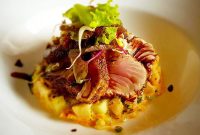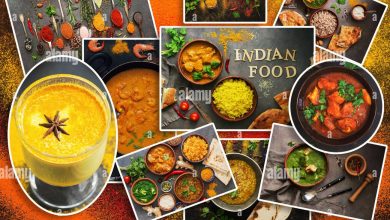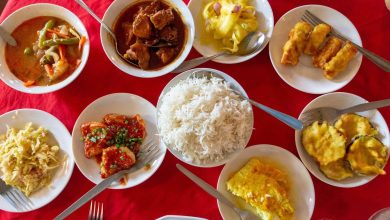What to eat in India and Goa, restaurants cafes local cuisine
So the gastronomic experience of India is one of the most important. We didn’t go to tourist restaurants, we were only once in the very center of Kandalama in a restaurant with a European contingent, and even once we went specially for 20 kilometers to the Flatfish restaurant, where not only local.
not only tourists, but only Indians, whites gather we were alone there, and, for the first time in our lives, we stood in line at a restaurant! But not for long, about 15 minutes. Great Indian cuisine is very inexpensive, just tired of waiting for the order. In general, everything is very slow in India, no one is in a hurry to go anywhere – accept it. Moreover, in the service, the locals receive a clear priority.
By the way, for us there is a concept – Indian cuisine, but they always clarify – Guan food? South or North?
But the must-see place is the network of vegetarian restaurants Navara.
They say India is dirty and unsanitary.
Well, probably not as sterile as in Germany or on Turkish beaches, where all the grains of sand are each put in their place, yes, it’s trashy in places, there are no trash cans on the streets, but in our cities and public places, I assure you, it’s not at all cleaner. Even in the most terrible-looking eatery with a simple oilcloth canopy and with an ordinary barrel as a tandoor, there is an opportunity to wash your hands with soap and clean dishes.
Food for tourists and food for locals are two different things! Here you will not be asked three times “Spicy? Are you sure?” Here they will immediately bring such that the plates will melt! The food is just everywhere, well, it’s just very tasty everywhere, even in the market in a simple canteen for merchants such pilaf that we can’t try it.

Alcohol, as I say, is not particularly held in high esteem, but cold local Kingfisher beer and local Old Monk rum are everywhere.
I often noticed such a picture – a local visits a café on a motorcycle in the evening, orders a glass of some soda, takes out a bottle of fen (cashew moonshine) from his pocket, slowly drinks and goes home. In general, bringing food and alcohol with you is not strongly forbidden. In beach shakes, if you order food from them, you are allowed to drink your own alcohol, and vice versa – by ordering drinks from them, you can bring seafood bought at the market that they will cook with you.
When we were in Goa, there were elections to the local administration of the state, and the sale of alcohol was limited either until 10 pm, or until 11, no one knew for sure, and they stopped selling openly after 9. But quietly from under the counter please, even for the same price.
Also, just be sure to look for the iconic juice centers in Chamorra.
There they make, not even juice, some new aggregate state of food – a very light and tender soufflé. A glass of avocado or mango juice… Eh… And for a snack, a salad of unknown fruits with ice cream.
And there are coconut sellers on every corner. Coconut is not a wooden brown thing that you first crack open the horseradish, and then you bite the horseradish. Coconut first, with one or two strokes of a machete, the top of the coconut is cut off and a tube is inserted into it, through which you drink somewhere a glass of sweet, but not cloying refreshing juice, and then the coconut is cut in half with the same machete, a spoon is cut out of the peel, and the jelly-like delicious mass.
Still around are such trays with Zhaitan machines (here is a video of the unit on its own) with a gasoline engine. The seller (driver? operator?) starts it, the machine makes Tyr-byre-tyr-brrrrrrr and begins to rotate the wheels of the press with a belt drive.
into which the seller (driver? operator?) puts some green sticks. These sticks turned out to be reed stalks, and the Zhaitan machine squeezes amazingly tasty juice from this reed, which the seller (driver? operator?) spills through the ice and hands you a glass of such a powerful refreshing energy drink for 15-20 rupees.

personal experience / Traveler / India
) We were warned that it would be spicy, but I didn’t think it would be that much, so I asked to cook it the way Indians eat this dish. After that, the waiter brought us an “antidote” – lassi, it’s something like kefir. Somehow we finished it, and the waiter (Aid – Shining Star Beach Sheki) became our friend, we always went to eat with him.
By the end of the holiday, we got used to spicy food, and sometimes we were not even asked to cook non-spicy or without chili. Moreover, spicy food is a way to protect against intestinal infections. Therefore, they did not hurt their stomachs.
You can eat on the beach, there are special restaurants, the food there is delicious (although sometimes with sand and juice is diluted with water), but expensive, the menu is large (the most delicious is Pineapple Chicken). And then you take a sunbed on the beach for free.
You can order a bottle of water and stay free all day long. Only to recalculate the bill, check it according to the menu, they used to add all sorts of nonsense to us, or they would count it wrong – an eye and an eye. Since we traveled a lot, we scouted a lot of places for eating.
The main trend: the farther from the beach, the cheaper. Therefore, we came to the hotel for breakfast (very meager and the same every day – a bun or toasts with butter and jam, tea or coffee), we had lunch in the capital of GOA – Punji (we traveled by bus, the route to all the sights of GOA was anyway through Punji) – we scouted a purely Indian restaurant there, only we went there from the whites, sea delicacies are 2-3 times cheaper, spicy, but exotic.
We tried shrimp in all possible versions (the most delicious prawns honey chili), squid, crabs, kingfish (this is their fish). We dined in sheik on the beach (at friend Adzhida) or in another restaurant we explored on the way to Arora (at friend Sonya).
Or they bought canned beans and fruits, bread, beer, nuts in the supermarket and dined in their room on the veranda. The fridge worked well and froze as it should. Beer in the store is 2 times cheaper than on the beach, rum is generally a penny by our standards. They are not traded in stores, the price is fixed there and is written directly on the factory label.



